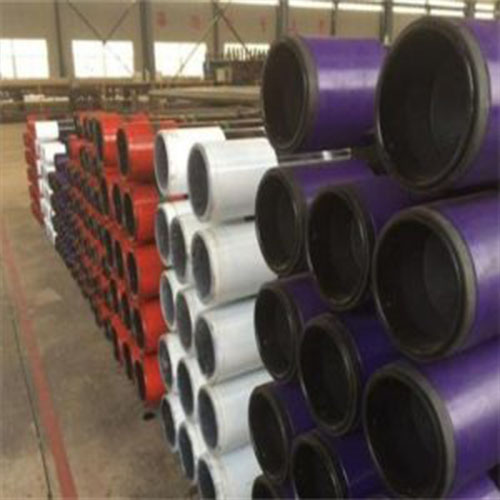Table of Contents
Comparing the Effectiveness of Child CO2 Sampling Tubes versus Nasal Oxygen Cannulas in Pediatric Patients
Child CO2 sampling tubes and nasal oxygen cannulas are both crucial tools in pediatric healthcare, aiding in the monitoring and management of respiratory conditions. While both serve distinct purposes, understanding their effectiveness in pediatric patients is essential for optimal patient care.
CO2 sampling tubes are designed to measure the concentration of carbon dioxide in exhaled air. This information is vital in assessing respiratory function, especially in patients undergoing mechanical ventilation or those with respiratory distress. By accurately monitoring CO2 Levels, healthcare providers can make informed decisions regarding ventilator settings and overall respiratory support.
On the other hand, nasal oxygen cannulas are commonly used to deliver supplemental oxygen to pediatric patients. These flexible tubes deliver oxygen directly to the patient’s nasal passages, increasing oxygenation and alleviating respiratory distress. Nasal cannulas are lightweight, comfortable, and easy to use, making them a preferred choice for oxygen therapy in children.

When comparing the effectiveness of child CO2 sampling tubes versus nasal oxygen cannulas in pediatric patients, several factors come into play. One primary consideration is the specific respiratory needs of the patient. For instance, in cases where accurate monitoring of CO2 levels is crucial, such as during mechanical ventilation or in patients with respiratory compromise, CO2 sampling tubes are indispensable.
However, in pediatric patients requiring supplemental oxygen without the need for CO2 monitoring, nasal oxygen cannulas offer a practical solution. Their ease of use and non-invasive nature make them well-suited for delivering oxygen therapy to children, whether in hospital settings or at home.
Furthermore, comfort and tolerance play a significant role in the effectiveness of these devices. Pediatric patients, especially infants and young children, may find certain medical interventions uncomfortable or distressing. Nasal oxygen cannulas, with their soft prongs and lightweight design, are generally well-tolerated by children, promoting better compliance with oxygen therapy.
In contrast, child CO2 sampling tubes may cause discomfort, particularly if they need to be secured in place for an extended period. However, healthcare providers can mitigate this issue by ensuring proper placement and using gentle securing methods to minimize discomfort and skin irritation.
Another critical factor to consider is the risk of complications associated with each device. Nasal oxygen cannulas are associated with minimal risks, primarily related to skin irritation or pressure injuries if improperly fitted or secured. In contrast, child CO2 sampling tubes may pose a slightly higher risk of complications, such as airway obstruction if not correctly positioned or dislodged.
Ultimately, the choice between child CO2 sampling tubes and nasal oxygen cannulas depends on the individual patient’s clinical needs and preferences. In situations where both CO2 monitoring and supplemental oxygen therapy are necessary, healthcare providers may opt for a combination of both devices to ensure comprehensive respiratory management.
In conclusion, both child CO2 sampling tubes and nasal oxygen cannulas are valuable tools in pediatric respiratory care. Each device offers distinct advantages and considerations regarding effectiveness, comfort, and Safety. By carefully evaluating the specific needs of each patient, healthcare providers can make informed decisions to optimize respiratory outcomes in pediatric patients.
The Importance of Proper Placement and Monitoring of Child CO2 Sampling Tubes and Nasal Oxygen Cannulas in Pediatric Respiratory Care
In pediatric respiratory care, the proper placement and monitoring of child CO2 sampling tubes and nasal oxygen cannulas are crucial aspects that healthcare professionals must prioritize. These devices play a significant role in assessing and maintaining respiratory function in children, particularly those with respiratory distress or compromised lung function. Ensuring their correct placement and continuous monitoring is essential for effective respiratory support and patient safety.
Firstly, let’s delve into the importance of proper placement of child CO2 sampling tubes. These tubes are commonly used in pediatric patients to monitor carbon dioxide levels in exhaled air, providing valuable information about respiratory status. However, improper placement can Lead to inaccurate readings, potentially leading to misdiagnosis or inadequate treatment. Healthcare providers must ensure that the sampling tube is securely attached to the patient’s airway, typically via a nasal prong or mask, and positioned to capture exhaled CO2 effectively.
When it comes to nasal oxygen cannulas, proper placement is equally crucial. Nasal cannulas deliver supplemental oxygen to patients with respiratory insufficiency or hypoxemia, helping to improve oxygenation and alleviate respiratory distress. However, incorrect placement can compromise oxygen delivery efficiency and patient comfort. Healthcare professionals must carefully position the cannula in the patient’s nostrils, ensuring a secure fit without causing discomfort or airway obstruction.
Transitional phrases can help guide the reader through the complexities of pediatric respiratory care. Moving forward, let’s discuss the importance of continuous monitoring of these devices. Monitoring child CO2 sampling tubes and nasal oxygen cannulas allows healthcare providers to assess respiratory status continuously, enabling timely interventions and adjustments as needed.
Continuous monitoring of CO2 levels provides valuable insights into respiratory function, alerting healthcare providers to changes in ventilation and perfusion. This real-time feedback allows for prompt adjustments to ventilator settings or respiratory support strategies, optimizing patient care and outcomes. Similarly, ongoing monitoring of oxygen delivery ensures that patients receive the appropriate amount of supplemental oxygen, preventing hypoxemia and its associated complications.
Furthermore, regular assessment of device placement helps identify and address any issues promptly. Dislodgement or displacement of CO2 sampling tubes or nasal oxygen cannulas can compromise their effectiveness, leading to inaccurate readings or inadequate oxygenation. By routinely checking device placement and ensuring proper positioning, healthcare providers can mitigate risks and optimize patient safety.
In conclusion, proper placement and continuous monitoring of child CO2 sampling tubes and nasal oxygen cannulas are critical aspects of pediatric respiratory care. Healthcare providers must prioritize these tasks to ensure accurate assessment of respiratory status, effective oxygenation, and patient safety. By adhering to best practices and utilizing transitional phrases to guide readers through the complexities of respiratory care, healthcare professionals can optimize outcomes for pediatric patients with respiratory conditions.

